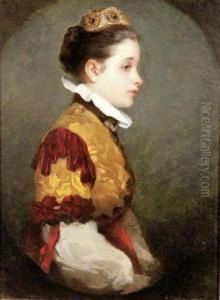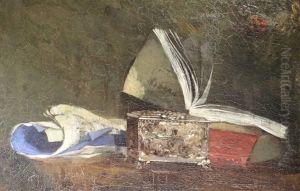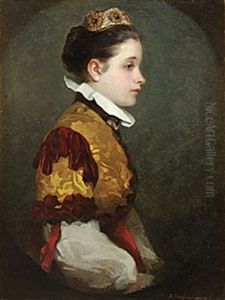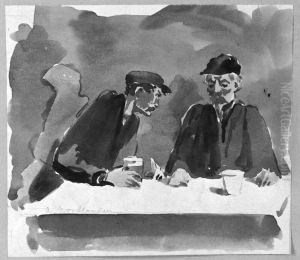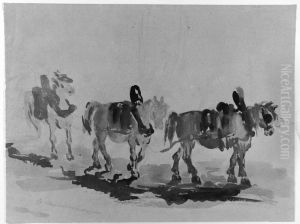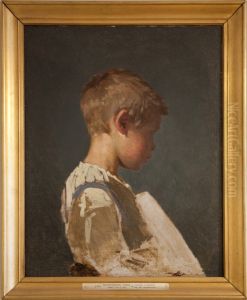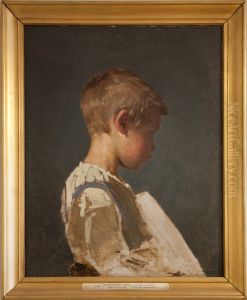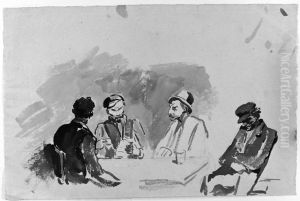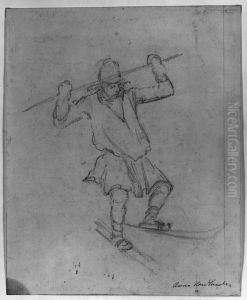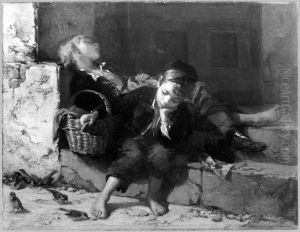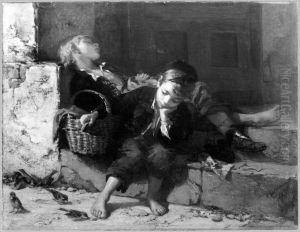Anna Nordlander Paintings
Anna Nordlander was a Swedish artist born on June 10, 1843, in Skellefteå, a town in the northern part of Sweden. She is known for her contributions to Swedish art in the 19th century, particularly during a time when it was challenging for women to establish themselves in the field of fine arts. Nordlander received her initial education in drawing in her hometown before moving on to more formal training.
Anna Nordlander's artistic journey took a significant turn when she enrolled at the Royal Swedish Academy of Fine Arts in Stockholm in 1864. At the academy, she studied under significant Swedish artists of the time and honed her skills in painting and drawing. Her work was primarily focused on genre painting and portraiture, with a keen interest in depicting the lives and customs of the Sami people, an indigenous group in the north of Sweden and other parts of the Nordic region. Through her paintings, Nordlander provided a valuable insight into the culture and daily life of the Sami, contributing to the national romantic movement that was gaining momentum in Sweden during the mid-19th century.
Despite her promise and talent, Anna Nordlander's career as an artist was short-lived. She struggled with health issues throughout her life, which frequently hindered her ability to work and create. Nevertheless, she managed to exhibit her works at several important exhibitions, including the Paris Salon in 1868 and the World's Fair in Vienna in 1873. Her painting 'The Sick Child' (Det sjuka barnet) was particularly well received and is considered one of her most significant works.
Tragically, Anna Nordlander's life and career were cut short when she died at the age of 36 on August 29, 1879, in Stockholm. Her premature death meant that her artistic output was limited, but her work has continued to be appreciated posthumously. Nordlander's paintings are considered important documents of the time, providing a window into the life of the Sami people and the role of women artists in 19th-century Sweden. Today, she is remembered as a pioneer among female Swedish artists, and her works are held in several Swedish museums, including the Nationalmuseum in Stockholm.

